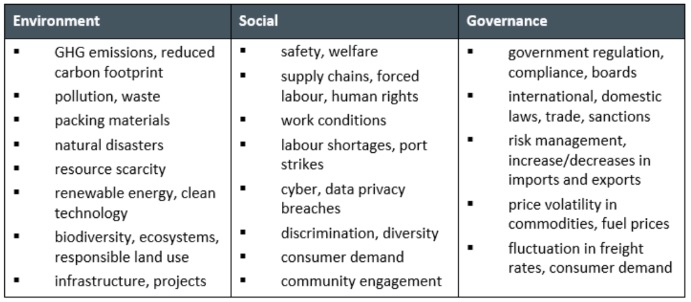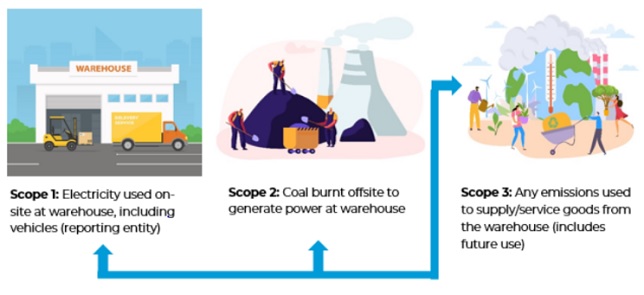- within Environment topic(s)
- within Law Practice Management, Antitrust/Competition Law and Energy and Natural Resources topic(s)
- with Senior Company Executives, HR and Finance and Tax Executives
- with readers working within the Environment & Waste Management and Property industries
The time to decarbonise is now. The UN wants all modes of transport (globally) to get to net-zero emissions by 2050. Research shows this target is possible for the Australian sector.
Given our relative distance from our trading partners, but with the advantage of abundant renewable energy sources, Australia needs to find ways to export (and import) goods efficiently. One opportunity we discussed last year is to commercialise carbon-free green ammonia as an alternative bunker fuel for vessels.
Introduction
The Australian transport industry has four sectors: Maritime, freight and logistics, rail and aviation.
Each year, about four billion tonnes of goods (or 163 tonnes of freight per person) are delivered across Australia. Over 70 per cent of our total trade in goods and services is with our APEC partners (Asia-Pacific Economic Cooperation). In short, freight systems and supply chains are the backbone of our economy. These operations are made possible by the National Freight and Supply Chain Strategy.
At the same time, domestic and international transport contributes 20 per cent of greenhouse gas (GHG) emissions worldwide. Without immediate action, that number could increase to 40 per cent by 2030 and 60 per cent by 2050.
As a result, ESG-conscious investors, regulators, customers and employees are pressuring leaders of transportation and logistics companies to decarbonise assets, go 'green' and commit to sustainability targets.
ESG risks
The main ESG industry risks are:

For a more detailed explanation of what ESG is, read our article here.
Next, we look at some topical ESG issues in the transport context.
Scope 1, 2 and 3 emissions - what are they?
In 2020, transport accounted for around 18 per cent of Australia's GHG emissions. These come from the combustion of fossil fuels, mainly petroleum and diesel for transportation.
Many large Australian transport operators and logistics companies must report their GHG emissions because of environmental and health concerns. These are categorised by 'scope' under the National Greenhouse and Energy Reporting Act 2007 (Cth) and National Greenhouse and Energy Reporting Regulations 2008 (Cth) (NGER Scheme):
- scope 1 emissions - released into the atmosphere from the 'direct' result of an activity (Reg 2.23)
- scope 2 emissions - released into the atmosphere from the 'indirect' result of purchased energy (Reg 2.24)
Scope 3 emissions are not included in the NGER Scheme.1 These are released indirectly from all upstream and downstream activities in the supply chain from the scope 1 facility onwards. Here's an example:

In summary, scopes 2 and 3 are caused by scope 1. A company that produces scope 3 emissions are essentially 'someone else's' scope 1 and 2 emissions.
The potential for 'double counting' arises if two companies try to claim the same emissions reduction to stay below their calculated baseline and receive 'Australian Carbon Credit Units' (ACCUs), which they then surrender to further offset their net emissions.
Accounting for GHG emissions in freight and logistics supply chains
An important issue for larger operators is accounting for GHG emissions in their supply chains. Why? Emissions are often spread across a complex network of suppliers and released in different locations when labour is outsourced.
Take an example export supply chain:
- factory manufactures goods
- freight forwarder picks up empty container and collects goods
- container transported to port by rail, ship, heavy vehicle, cargo plane
- cargo unloaded at port by stevedore and loaded onto vessel
- vessel carries cargo from Australia to export country.
The factory's scope 1 and 2 emissions may be relatively low but the bulk of the emissions are scope 3 when the cargo is transported.
Scope 3 are the biggest contributors to climate change and often represent the largest portion of a companies' emissions inventory. However, because they are not reportable under the NGER Scheme (or included in the nation's emissions budget) these emissions can't be quantified. This is when the accounting task becomes trivial.
The factory is responsible for scope 1 and 2 but scope 3 arguably falls outside their direct control or ownership onto the other operators. The questions are then, whose responsibility is it to reduce scope 3? Is the factory justified in not taking responsibility for its share?
From an ESG perspective, the answer is shared and collaborative. For the purpose of supply chains, the point is to assess the overall emissions produced and for each party to realise the extent of their own output. That way, they can set a reduction target to manage their climate impact and attract ESG investors.
Key takeaways
Operators should:
- focus on decarbonising operations from the direct facility up to reduce the impact in the overall chain
- develop an ESG strategy that targets reducing scope 1-3 emissions and is shared with stakeholders
- build their relationship with suppliers to enhance transparency and choices around sustainability practices.
Examples - ESG industry developments
- Australian mining contractors are upgrading their fleets by trialling new electric haul trucks to reduce diesel consumption. Hybrid haul trucks (with lithium-ion and hydrogen batteries) are also on the agenda.
- Finnish company, Wärtsilä is designing carbon capture scrubber kits for ships to reduce carbon dioxide and sulphur emissions. The devices are expected to hit the market in 2025. This comes at a time when the International Maritime Organisation is developing its Energy Efficiency Existing Ship and Carbon Intensity Indicator Regulations to reduce carbon emissions by 70 per cent by 2050.
- In February 2022, the Isle of Man became the first flag state to offer a 15 per cent discount on registration fees for ships using 'green' decarbonisation technology (wind/shore power, biofuels).
- Tokyo shipping giant, NYK Line is linking ESG targets to executive remuneration.
- Australian banks are starting to issue 'green' loans to fund clean transportation projects. The Canberra Light Rail project is one which aims to run 100 per cent on renewable energy. Growing numbers of shipowners and operators internationally are also using sustainability-linked bonds to show their commitment to ESG metrics.
- Australia now has a National Hydrogen Strategy, which is a policy roadmap that aims to target our industry as a major player in global hydrogen production by 2030.
Footnote
1Note, these can be used under the Australian National Greenhouse Accounts (a series of reports and databases published by the Australian Government Department of Industry, Science, Energy and Resources that estimate Australia's GHG emissions from 1990 onwards).
This publication does not deal with every important topic or change in law and is not intended to be relied upon as a substitute for legal or other advice that may be relevant to the reader's specific circumstances. If you have found this publication of interest and would like to know more or wish to obtain legal advice relevant to your circumstances please contact one of the named individuals listed.


